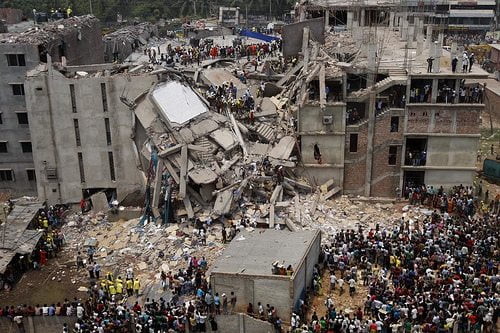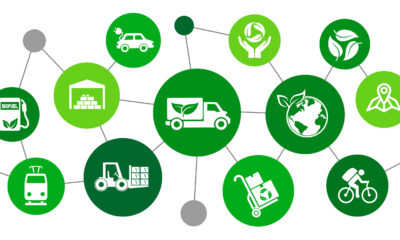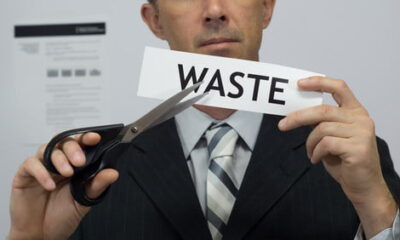

Economy
We are a long way from achieving stability in supply chains
It is six months since one of the world’s worst factory disasters occurred in Bangladesh, killing nearly 1,200 people and affecting thousands more. But what can be done to address these major supply chain flaws and who is responsible for change?
On the morning of April 24 2013, the Rana Plaza complex in Bangladesh, which housed a bank, several shops and a garment factory, collapsed. It left an astronomical trail of destruction and major retail brands, whose products were manufactured in the factory, were criticised for failing to note serious warning signs that eventually led to the disaster.
Employees had notified building managers on the previous day of cracks that had appeared in the building. Several shops were closed, but many employees were ordered back to work. To make matters worse, some were even threatened with the loss of a month’s pay if they failed to turn up – amounting to £38.
A day later, 1,200 were killed and over 2,500 injured when part of the building collapsed. The tragedy is that it took such a devastating incident for the business flaws and supply chain oversight to come to light.
The legitimacy of the factory itself was brought into question in the immediate aftermath. The head of the Bangladesh fire service claimed in the New York Times that the four highest floors in the building had no permit. In addition to this, architect Massood Reza said the building was initially designed to house offices and shops, and that the structure would therefore not have been able to cope with the weight and vibrations that come from heavy machinery.
Reactions to the disaster came from far and wide. Campaigners, politicians, consumers and the media were quick to stand behind the victims. Pope Francis condemned the conditions created by factory owners as “slave labour“.
However, the Rana Plaza disaster was by no means an isolated incident. Since April, there have been a number of similar events involving fire safety, one of which recently claimed the lives of six workers.
A BBC Panorama investigation brought to light the story of a 13-year-old girl who had been forced to work in a different factory after her mother was left crippled by the Rana Plaza disaster, as well as some workers who were forced to work 19-hour shifts.
But whose responsibility is it to act to address the dozens of issues – the low pay, the poor working conditions, the lack of regard for regulation and safety and the long working hours?
The answer to that is everyone. If you have any involvement whatsoever with the fashion or retail industries, it is your responsibility as a citizen to help enact change.
Consumers, suppliers, buyers and policymakers – to mention a few – have all had some form of benefit from the exploitation of these workers, whether that be low cost clothing, huge profits or tax benefits.
Membership organisation Sedex recently ran a six-part mini-documentary series which was featured on Blue & Green Tomorrow. Throughout the series, industry leaders and professionals from a cross-consortium of retail giants came together to look at the ways in which everyone can benefit from a more sustainable supply chain.
There are often high expectations and strenuous demands placed on suppliers by their buyers. These can sometimes conflict, creating difficulties on the part of the supplier.
Commenting within Sedex’s films series, Peter McAllister, director of the Ethical Trading Initiative, says, “The brand or retailer at the supermarkets is concerned about what the customer thinks, and they often place significant demands therefore on their suppliers to meet their expectations.”
This can lead to confusion, with more and more time spent managing projects, creating products to meet the needs of different buyers and carrying out multiple audits, leaving less time to tackle the issues that really matter – those relating to society and the environment.
In order to tackle the issues within the networks that are so intertwined in the modern supply chain, everyone in any business must be aware of the risks. This includes lawyers, human resources and administrative staff, right up to senior management. Each and every person within the system must be aware of the potential impact that their decisions could have further down the chain, and be aware of the importance of getting to grips with responsible sourcing.
Supply chains are so complex that it is often extremely difficult for suppliers to concentrate on the things that matter most. Multiple audit demands from multiple buyers are often all too big a burden on suppliers. High quality demands by consumers are passed on in this process, and as a result, suppliers find that their time is spent attempting to pitch their goods and services to meet all the specific demands.
Carmel Giblin, CEO of Sedex, suggests one way of addressing this is by “getting multiple companies to agree around a format for that, using common and consistent audit methodologies. These kinds of approaches are really helpful.”
Transparency is another of the key factor which Sedex says can improve standards within the supply chain.
Trude Ertresvåg, head of corporate social responsibility at REMA 1000, identifies the consumer risks of an opaque supply chain: “If there’s no transparency in your supply chain, you wouldn’t know what could go wrong because it makes it much more difficult to identify the quality of the product and also to make sure that the product that you’re actually serving the customers is what’s labelled on the outside of it.”
The horsemeat scandal is just an individual example of this in action, but in some cases, the consequences of opaqueness can be much more severe.
If consumers and retailers knew of the working conditions at Rana Plaza prior to the disaster, would they have demanded change? The system needs to be transparent so that these risks can be addressed, before it is too late.
Many companies, however, feel that by keeping their cards close to their chests, they are protecting their financial interests. It is feared that by disclosing certain pieces of information, buyers can go directly to manufacturers, cutting out the middle man and making them redundant. The fact of the matter is that no single company can tackle these problems alone, which is why a collaborative approach is vital.
“There are really accessible ways which companies can collaborate”, says Giblin, adding that one thing to avoid is “reinventing the wheel or asking your suppliers to do something different when there is no real need to it.”
By sharing resources, best practices and knowledge, global industries can together achieve more. This must be built on a mutual trust and relies heavily on the integrity of all the parties concerned, but most of all, involves a genuine desire to minimise corporate and social risks.
Only when companies start working together to build on this trust, can they begin to benefit from mitigating the risks that exist within the supply chain. This isn’t about espionage, or about undercutting business. This is about making sure that the profiteering of corporations does not come at the cost of the basic human rights and liberties of those driving the businesses by producing the goods. This is about ensuring that the whole retail system is sustainable and fit for purpose.
Looking to the future, the global population is expected to rise to 10 billion by the turn of the century. As such, resource demands will dramatically increase and if the world ignores the flaws within its supply systems, not only will it fail to meet demands, but we will continue to see tragedies such as the Rana Plaza collapse, with the possibility of them becoming more common. It is our job as consumers and as global citizens to demand a change.
Sedex’s Responsible Sourcing Insights series:
Episode one: Getting to grips with responsible sourcing
Episode two: Tackling complexity in multi-tier supply chains
Epiosode three: Driving transparency to improve standards


 Environment10 months ago
Environment10 months agoAre Polymer Banknotes: an Eco-Friendly Trend or a Groundswell?

 Environment11 months ago
Environment11 months agoEco-Friendly Home Improvements: Top 7 Upgrades for 2025

 Features9 months ago
Features9 months agoEco-Friendly Cryptocurrencies: Sustainable Investment Choices

 Features10 months ago
Features10 months agoEco-Friendly Crypto Traders Must Find the Right Exchange






























